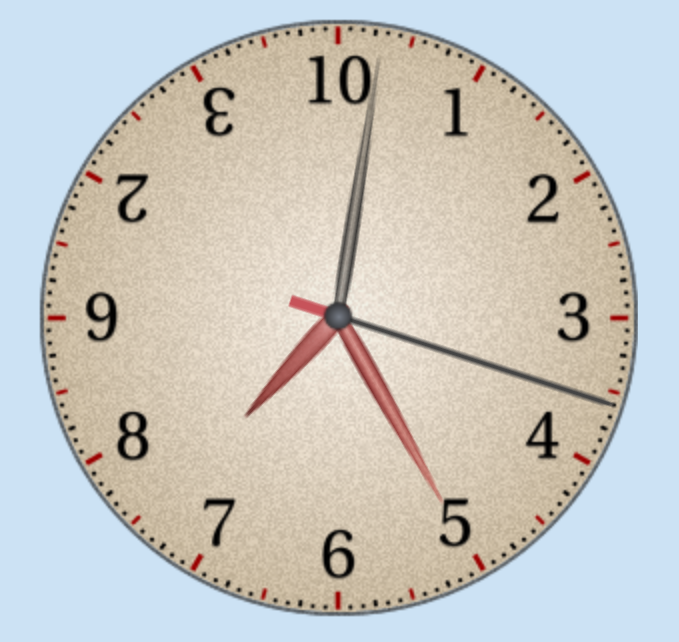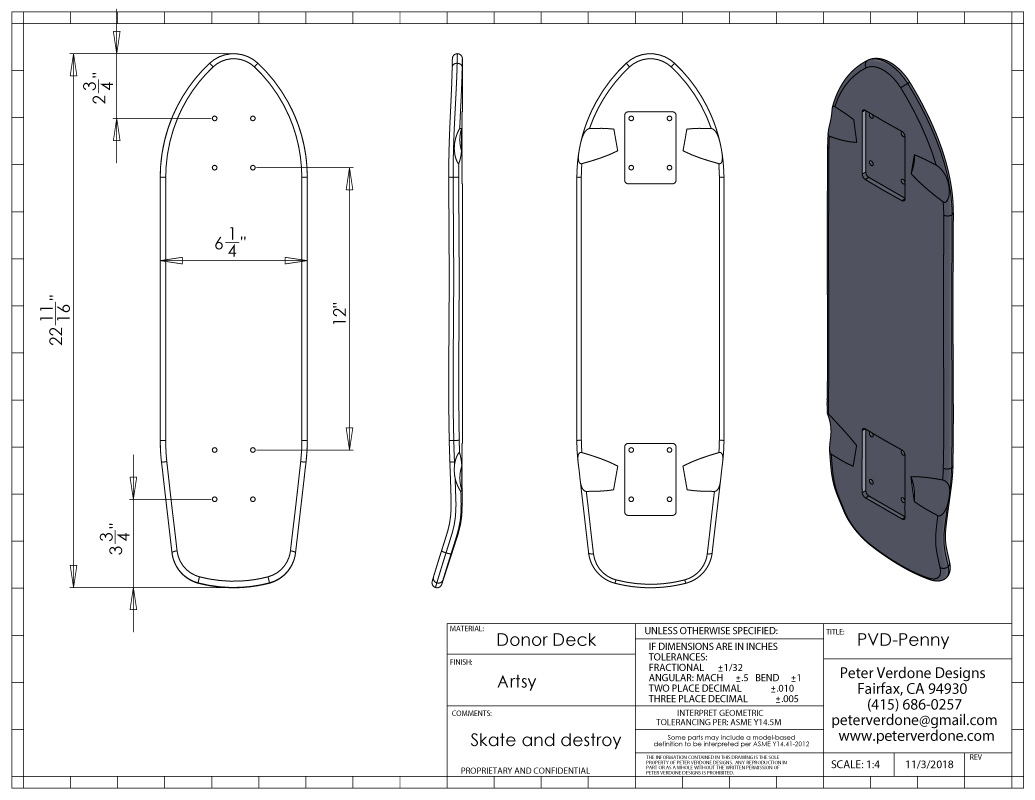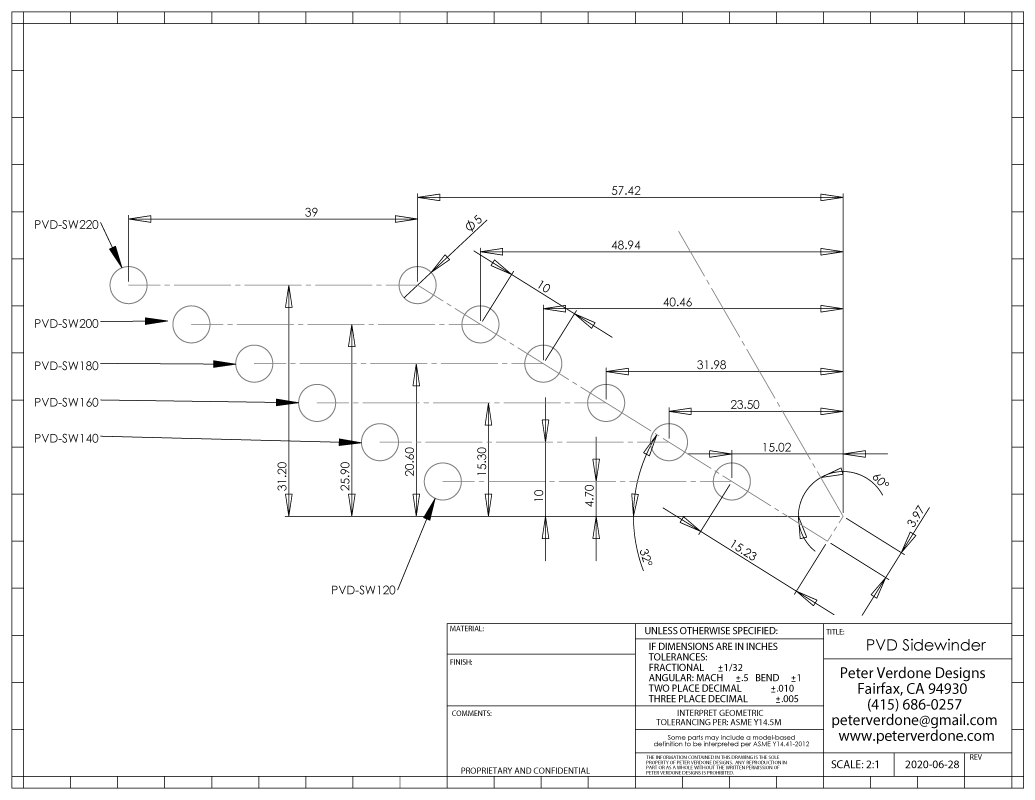I’ve been trying to learn to draw in metric for the last few years. It’s not as easy as you’d think, certainly not for an American.
I’m now old. 50 years old so I have been thinking in a mix of old ways and new in the United States. I am able to change my methods but it’s not easy and becomes less easy every year. Still, I draw parts that interface with metric systems all the time and I should be doing a better job than I do. I also draw parts that work with imperial systems all the time in addition to working in a basic machine shop and wood projects which pulls me in a whole different direction. The whole mix but firmly planted in the world off imperial measures.
Here is a print of a skateboard deck drawn in a way familiar with those working in that industry in the US. If something is made of wood, it’s going to be fractional imperial.
Here’s the problem and it’s elemental and basic but makes it very hard to change my thinking; the imperial system is based on halving and the metric system is counting tens.
…OBVIOUSLY. We all learn this in school.
The problem comes up later and well below the academic discussion and thinking. Working in imperial units is fundamentally different than working in metric.
Let’s say I’m drawing a part in the scale of about 100mm. I have some feature or sketch that is to be drawn at a scale below 1mm. Let’s say that it’s a fillet and not a full millimeter in size. Let’s also say that the first size that I try is 1/2 of a millimeter, or 0.50mm. No problem here. Now, lets say that that that’s too small of a fillet, it needs to be larger, so I try 3/4 of a millimeter, or 0.75mm.
THIS IS WRONG. TOTALLY WRONG.
I made the mistake that any American would make. I just cut the difference in two. That’s how we think. 1/2, 1/4, 1/8, 1/16, 1/32. 1/64, and even 1/128. That’s how we’ve been programed to think. It’s perfectly fine if living in a base-12 paradise. In this world, 3/4 of a millimeter makes perfect sense.
In a world of division, base-12 is king. Twelve is divisible by 1, 2, 3, 4, 6, and 12. Ten is only divisible by 1, 2, 5, and 10. 6:4 or 3:2 advantage in divisioning. This is as old as the Romans, their empire.
Of course I think this way. Every time I walk into the machine shop I’m surrounded by fractions. Every time I order material, I’m working with fractions. It is the language of making things in my world and I spend as much time making as I do drawing.
In the metric, or base-10 world, it’s not that way. This, again, is a system of tens. 10mm, 10cm, 10m, 100m, 1km. That’s how they do it and we know that. The issue is when we are working in ‘fractions’ of millimeters or whatnot. In the situation that I describe above, without a really good reason to do otherwise, I would choose 0.70mm or 0.80mm.
Note that in this drawing, the driving offsets are in whole ‘tens’ while only the mathematically arrived at dimensions are broken down. I could have brought those to a single decimal place but in this case, I preferred the increased precision.
This is what I’m talking about. This is what I’m having a hard time doing. I keep attempting to cut millimeters into 4 parts instead of 10. It’s taking a lot of work because the use of fractions is imbedded so deep in me. It seems wrong not to. I want my engineering and drawings to look right. This is something important and I need to keep up.



